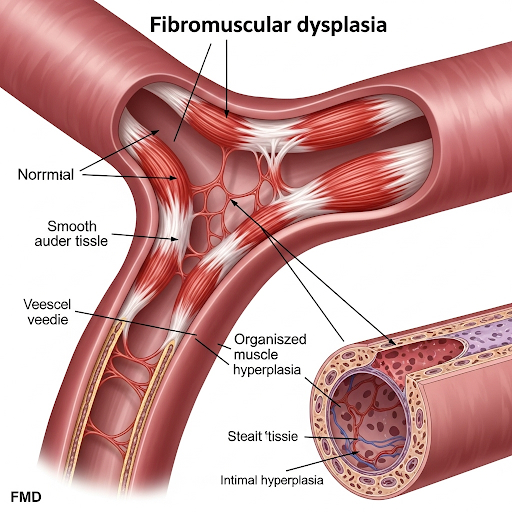
Fibromuscular Dysplasia: A Neurological Perspective
Fibromuscular dysplasia (FMD) is a rare vascular disorder that can have significant neurological implications, especially when it affects the arteries supplying the brain. This condition involves abnormal cell growth in the walls of medium-sized arteries, leading to narrowing (stenosis), aneurysms, or dissections. The carotid and vertebral arteries—major vessels that supply blood to the brain—are among the most commonly affected.
When FMD involves these arteries, patients may experience neurological symptoms such as headaches, dizziness, pulsatile tinnitus (a rhythmic whooshing sound in the ear), or even transient ischemic attacks (TIAs) and strokes. These symptoms often lead individuals to seek care from a neurologist, who may be the first to suspect and investigate the condition.
A neurologist typically collaborates with vascular specialists to confirm a diagnosis using imaging techniques like CT or MR angiography. Recognition of FMD is critical in the neurological setting, as prompt treatment can prevent serious complications such as stroke or permanent neurological damage.
Management often involves medications to control blood pressure and reduce stroke risk, and in some cases, angioplasty to restore blood flow. While FMD is chronic, with careful monitoring and interdisciplinary care—including neurological oversight—most patients can manage the condition effectively.




